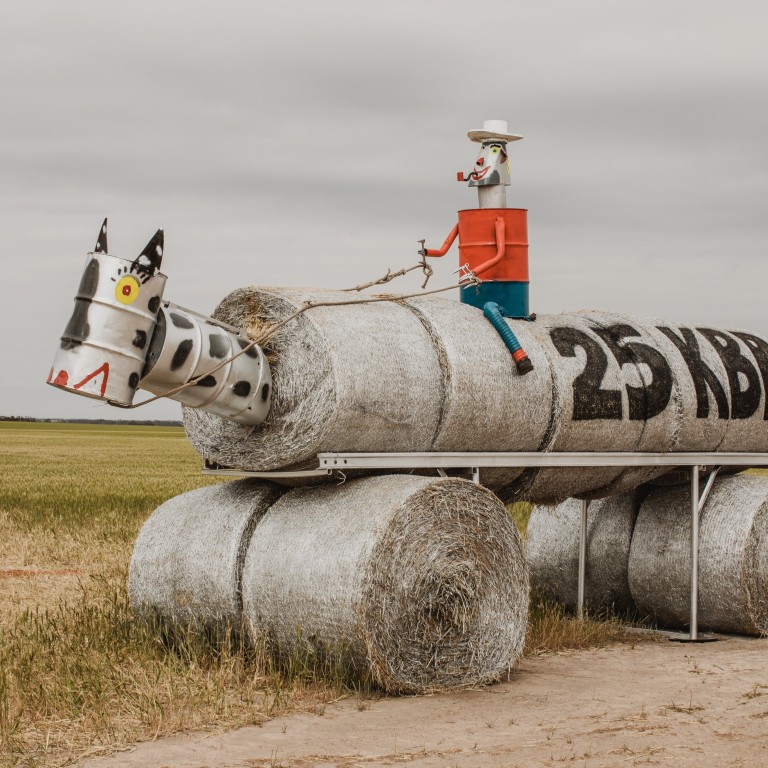
Weird tourist attraction in Western Australia draws visitors to rural town’s annual Bush Races
- Over 70 sculptures made from scrap metal line the Tin Horse Highway in Kulin, Western Australia, drawing thousands of tourists to its annual Bush Races
- The quirky tourist attraction is the brainchild of Kulin wheat farmer Mary Lucchesi, who ‘never expected it would become the attraction that it has’
What to do about Mary?
Some 20 years ago it was the question on the lips of everyone in the town of Kulin, Western Australia, 280km (170 miles) east of Perth, where second-generation wheat farmer Mary Lucchesi began asking friends and neighbours to build sculptures of horses on the road leading from town to her front yard.
She’d envisioned the sculptures would help promote the annual Bush Races – Kulin’s biggest social event – hosted every October at the Lucchesi property.
Mary’s vision came true. Known today as the Tin Horse Highway, lined with 70-odd horse sculptures made from disused car parts, 44-gallon (200-litre) drums, old farm machinery and stoves, is one of the state’s most popular drives.

It helps attract more than 4,000 people to the Bush Races every year and produces a never-ending conga line of tourists, who take a detour to see the tin horses at Kulin on the road to Wave Rock (a popular natural rock formation resembling a breaking ocean wave).
“I thought it would be a great way to promote our community but I never expected it would become the attraction that it has,” Lucchesi says. “It’s amazing the way it’s become such an important and iconic attraction to our region.”
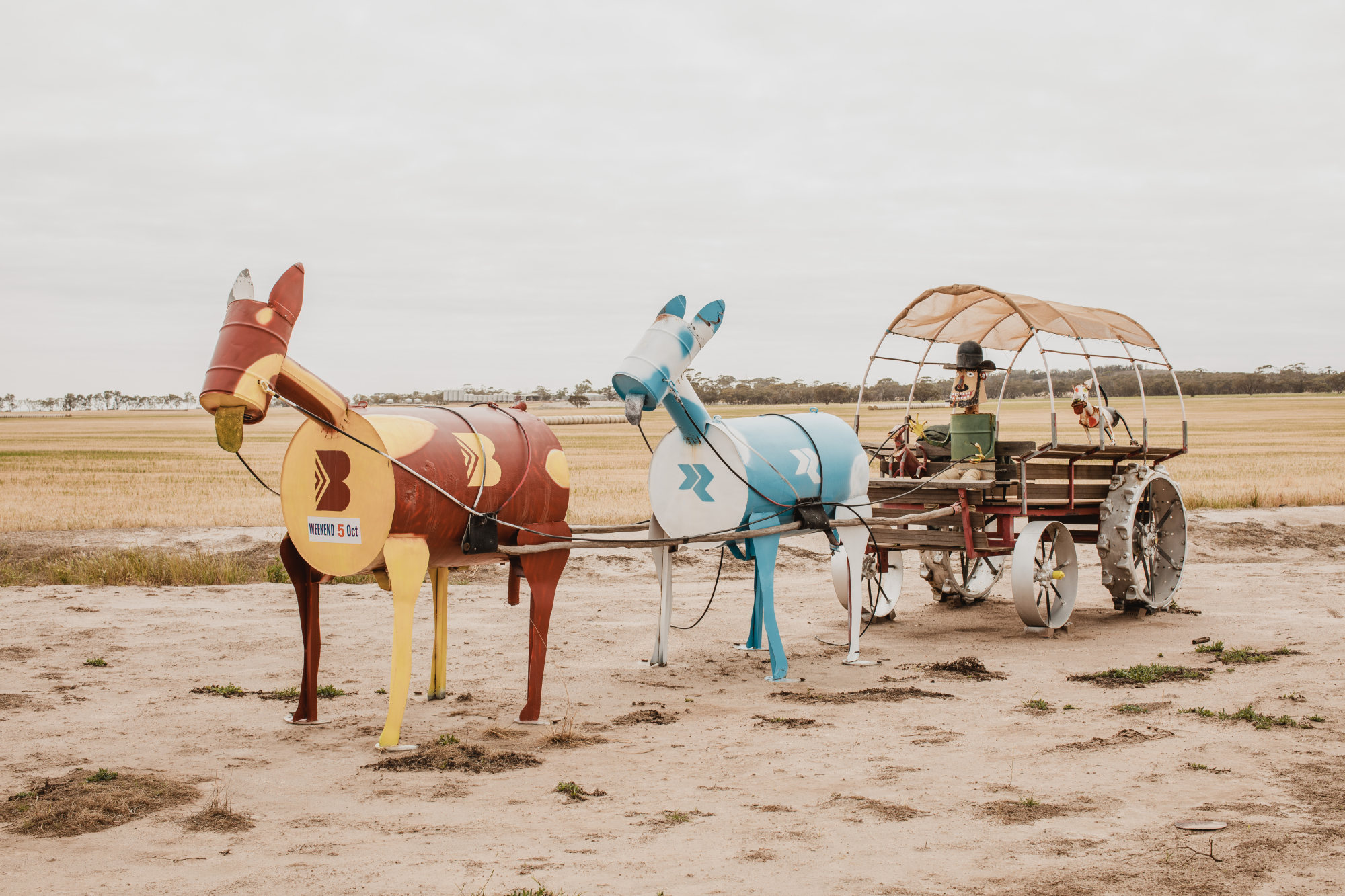
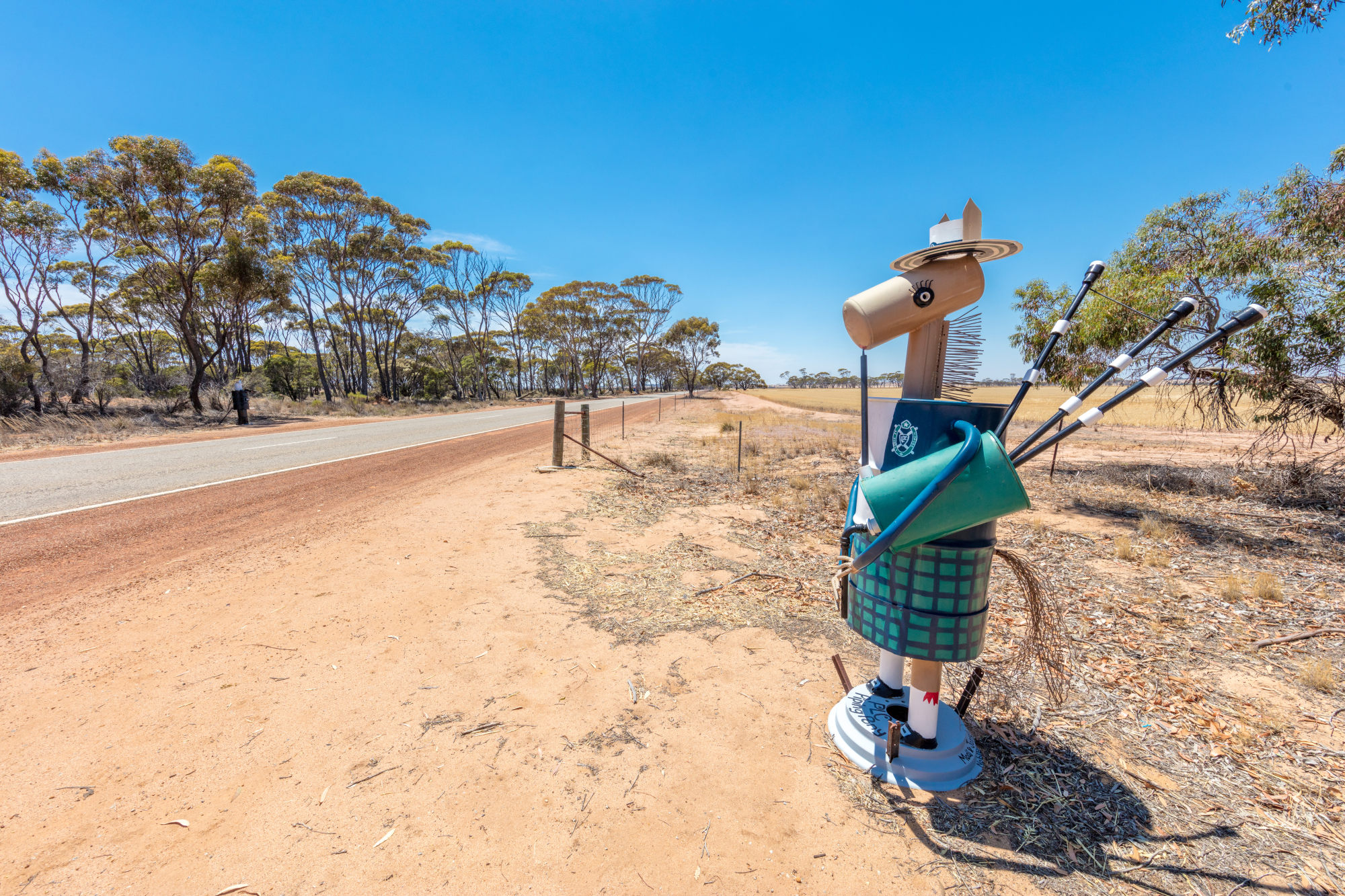
To understand how a collection of gangly looking tin sculptures can provide such a welcome distraction in the Wheatbelt (a predominantly agricultural administrative region of Western Australia), one has to spend a few hours driving around its dizzyingly flat 154,000 sq km (59,460 square miles).
“The landscape is beautiful but it’s pretty flat and not that exciting. We don’t have any hills or mountains – just big blond wheat fields that stretch forever,” says Gen Whisson, a senior project officer with the Shire of Kulin. “You’re driving along when suddenly these quirky horses appear from nowhere.”
A few years back, Whisson was put in charge of Telling the Tin Horse Highway, a state-funded project to record and document the history of the Tin Horse Highway.
The tin horses are very clever … [at] attracting tourism through a grass-roots community project.
Since then she has interviewed more than 70 sculptors, created welcome signs, established a database, made a short documentary and even written a book, called Much More Than Metal.
“The project was about finding out who made the horses, what inspired them and how long it took to make them,” she says. “For example, the horse named Fillypoosis, holding a tennis racket, was built in 2004, when [Australian tennis player] Mark Philippoussis was hitting the headlines for swearing at Wimbledon. A lot of the tin horses are politically incorrect like that.
“We have one sitting on a toilet reading a copy of ‘Playhorse Magazine’ and there was another one in a police uniform holding a speed gun and a sign saying, ‘Random Breast Testing’.
“Unfortunately, it’s also one of the 50-odd horses that have fallen apart or been vandalised and retired to the scrapheap over the years.”
Telling the Tin Horse Highway was financed by the Wheatbelt Development Commission, a state authority that acts as a conduit between the community and government.
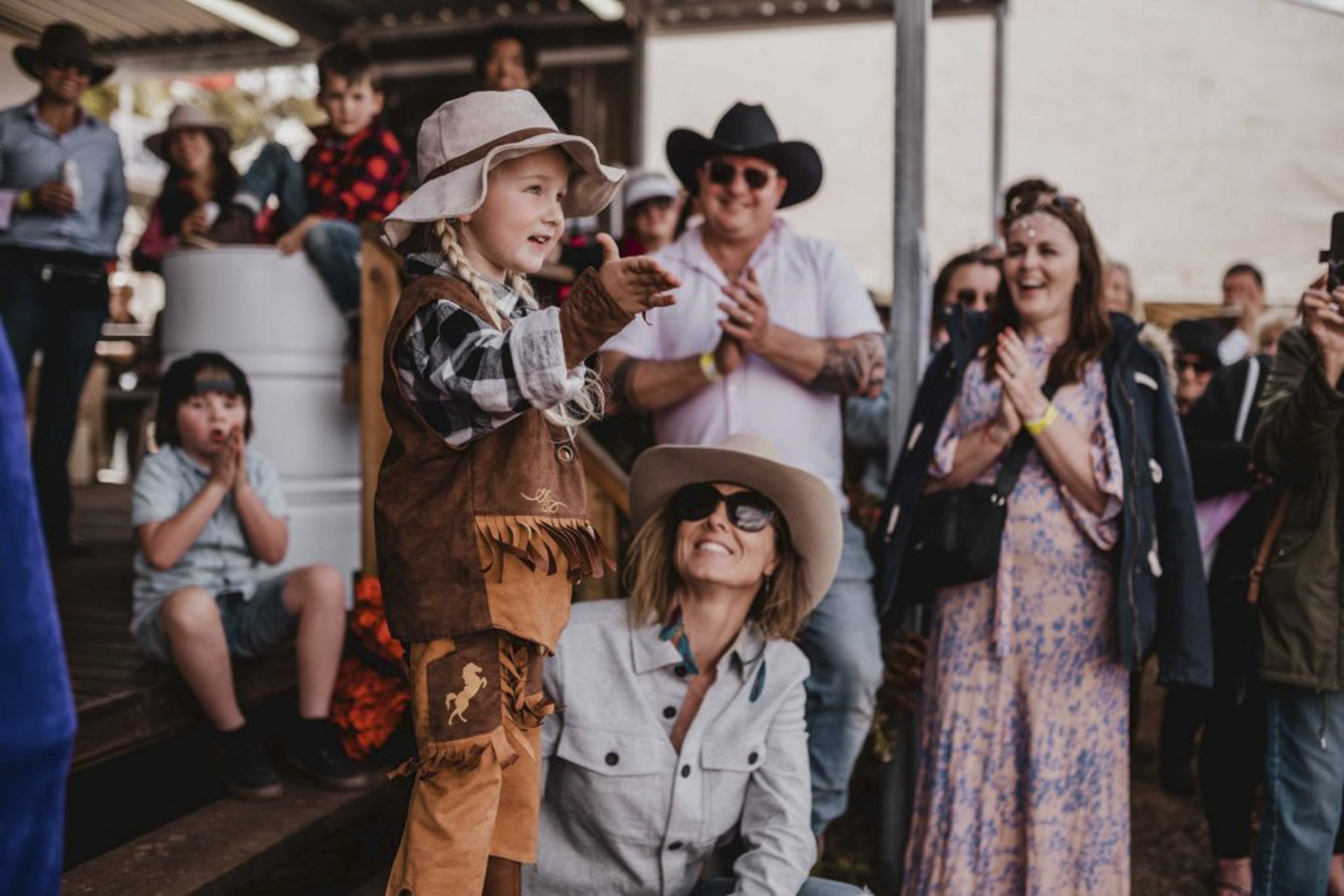
“Why’d we finance it?” says CEO Wendy Newman. “Well, we’re trying to support a more diverse economic base in the state, and the tin horses are very clever, in that they do that by attracting tourism through a grass-roots community project.
“Which is my favourite? Well, they’re all so different and funny in their own way, but I really love the horse in the aeroplane with its mane blowing in the wind. Every time I see it, it makes me smile.”
As more and more horses started popping up on the highway and farmers tried to outdo each other with more elaborate creations, their friendly rivalry grew into something more serious.

Now in its 17th year, the Tin Horse Competition sees a flurry of activity along the highway in the nights leading up to the Bush Races as budding artists compete for their share of A$2,000 (US$1,350) in prize money.
“I had no idea how small it would be or what a strong sense of community it has,” he says. “I went into the shops and they were like, ‘You must be Erin’s husband’.
“It reminded me of the village in England where I grew up, and got me thinking about how I could give something back to the people for making me feel so welcome.”
The answer came to Heath in the form of “points” – blunt spikes dragged by tractors to sow seeds in the soil. After finding hundreds of old points strewn about his wife’s family’s farm, he came up with the idea of using them to make scales for a giant steel seahorse for the Tin Horse Highway.
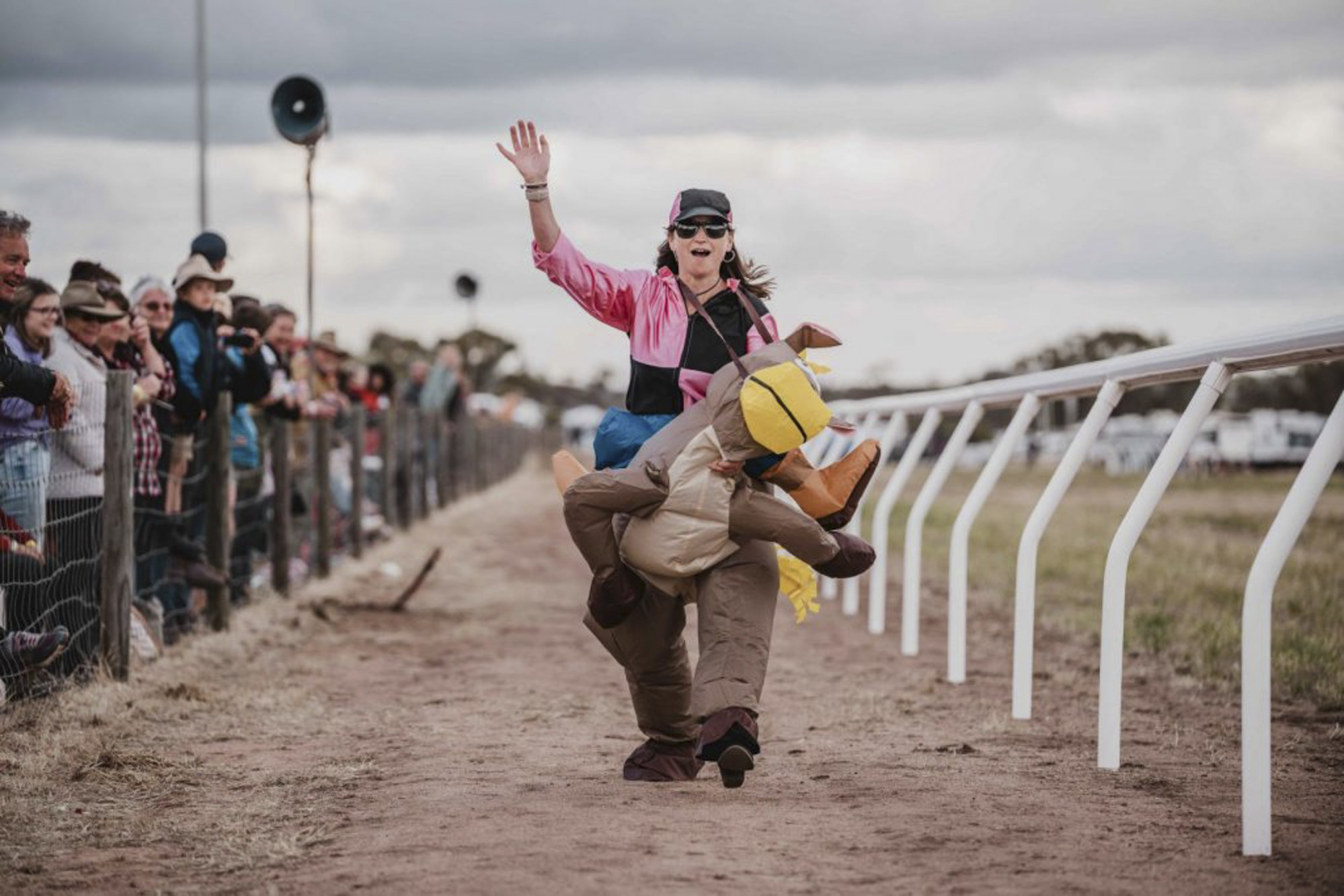
“Building it was a real adventure. I spent two weeks locked away in the shed welding points onto a frame,” Heath says. “When I’d finished, it weighed 600kg (1,320lbs) and we needed a winch to put it in place.”
The A$2,000 cash prize helped cover Heath’s costs. But the real reward, he says, was the many pats on the back, handshakes and hugs showered upon him.
“It was incredible because I genuinely did feel like part of the community. In England, people are disjointed and you can live next to someone for years and never hear a peep out of them. But when I went to the races for the first time it was like I was already a local.
“Everyone came up to me and said, ‘You’re the guy who made the seahorse, we really love it’.”


